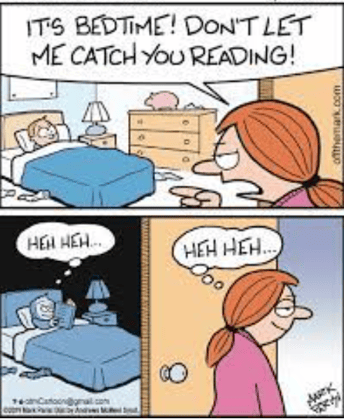Table of Contents
Do you ever feel like you're doing everything right in your inbound marketing strategy, but just can't seem to get the conversions you're looking for?
The problem might be your Calls-to-Action (CTAs).
CTAs are like the cherry on top of your inbound marketing sundae - they're the final touch that can make all the difference in converting your website visitors into customers. But what makes a CTA effective?
Carve out the next five minutes in your schedule to read on and find out!
TL;DR: CTAs Are the Unsung Heroes of Inbound Marketing
-
CTAs guide users to take action, from clicks to conversions
-
Good CTAs are clear, visually bold, and tailored to the buyer’s journey
-
Value-first CTAs offer trials, downloads, or discounts in exchange for engagement
-
Test often, as A/B testing CTA copy, design, and placement improves performance over time
-
CTAs go beyond buttons: videos, quizzes, images, and even reverse psychology can drive action
-
Tracking CTA clicks gives insight into user behavior and reveals what actually works
What’s a Good Call to Action Definition?
CTAs are short, compelling phrases that prompt a user to take a specific action, such as making a purchase, signing up for a newsletter, or filling out a contact form. In addition, they can also be used to upsell and cross-sell products or services, increasing a company’s average order value.
They are usually placed at the end of landing pages, email campaigns, and blogs to drive conversions and engagement, and are typically in the form of buttons or links with phrases such as "Buy Now," "Learn More," "Subscribe," "Get Started," and "Download Now”. To create a heightened sense of urgency and FOMO (fear of missing out), language such as "Limited Time Offer" or "Don't Miss Out" is also often used.
CTA clicks can easily be tracked and measured, providing valuable insights into user behavior and preferences that can inform future marketing efforts.
What CTA strategies actually increase conversions in inbound marketing?
Well-devised CTAs are crucial to executing your inbound marketing strategy. Here are a few things worth remembering:
Use Clear and Concise Language
The last thing you want your CTA to do is confuse potential customers; that’s why they should be easy to understand and tell the user exactly what action you want them to take. Use active verbs that tell them what they will get when they click the CTA (e.g. “Book a Discovery Call”) and avoid generic language like "click here".
Bottom line: You don’t want someone who is interested in your content or services to leave because they didn't know where to turn for their next steps.
Make it Visually Appealing
Use contrasting colors, bold fonts, and eye-catching design to draw attention to your CTA. It should stand out on the page and be easy to find.
Consider User Stage
CTAs can be taken to the next level if they are customized based on the user's stage in the buyer's journey, such as offering a free trial for those in the consideration stage or a discount code for those in the decision stage.
Offer Something of Value
Your CTA should provide a clear benefit to the user. This could be a free trial, an eBook, a discount code, or access to exclusive content.
Use A/B Testing
Is your CTA any good? Use A/B testing to test different messaging, design elements, and placement to optimize for the best results. Continuously iterate and improve your CTAs based on user behavior, performance data, and feedback. This will help you to improve your conversion rates over time.
Mobile Friendly
With the majority of internet users accessing content on their mobile devices, it's essential that your CTA is mobile-friendly and easy to use on a small screen.
Be Strategic with Placement
CTAs are usually placed at the end of a piece of content, but that doesn't mean that they have to be or even should be.
Experiment with placing CTAs in strategic locations throughout your website, landing pages, and blog posts to increase the chances of conversion. Consider the user journey and place CTAs at natural stopping points where users are more likely to convert.
How can non traditional CTAs drive action without using traditional buttons or links?
Content is evolving. Less and less people are cozying up to read a company’s eBook and more and more are watching 30 second videos. CTAs have evolved too, and although these “non-written” CTAs are oftentimes more subtle, they can be just as effective as a link or button in guiding a viewer towards the desired action.
Video and Audio Cues
Video and audio cues, such as a video tutorial or a podcast episode, can be effective non-written CTAs. By providing valuable content that addresses a viewer's pain points, businesses can build trust and establish credibility, increasing the likelihood that the viewer will take action.
Interactive Features
Quizzes or surveys can also serve as non-written CTAs. By engaging the viewer in a fun and informative way, businesses can increase the likelihood that the viewer will take the desired action, whether it's making a purchase or signing up for a newsletter.
Social Proof
Customer reviews or ratings can be a great method of showcasing positive feedback from satisfied customers, and can help businesses build trust and encourage viewers to take action.
Images
Images can serve as a non-written CTA by featuring a product or service in a way that encourages users to take action. For example, a product image that shows a person using the product can be a subtle way to encourage users to purchase the product.
Videos
Videos can show a product or service in action, encouraging users to make a purchase.
Reverse Psychology
Most everyone is familiar with the concept of reverse psychology.

A far cry from the “Act Now!” commands are the more intriguing CTAs which would seem to drive customers away. Examples of this could include a “Don’t click here” button, which would be sure to pique the interest of at least some visitors.
How do strong CTA strategies impact overall inbound marketing performance?
Effective CTA strategies can significantly impact the success of a marketing campaign as it often serves as the final push to convert potential customers into actual ones, so it is crucial to ensure that it is well-designed and placed appropriately.
When creating CTAs, keep in mind that the language used should be clear, concise, and action-oriented. Avoid using generic terms like "click here" and instead use phrases that convey the value proposition to the user, such as "get started now" or "download our guide."
Placement is also important, as the CTA should be visible and easy to locate. Experiment with different positions and designs to find the optimal placement for your website or marketing materials.
Lastly, it is important to track and measure the effectiveness of your CTAs through metrics like click-through rates, conversion rates, and engagement rates. This will allow you to continuously refine your CTA strategies and improve the overall success of your marketing campaigns.
.png)
.png)

.png)
